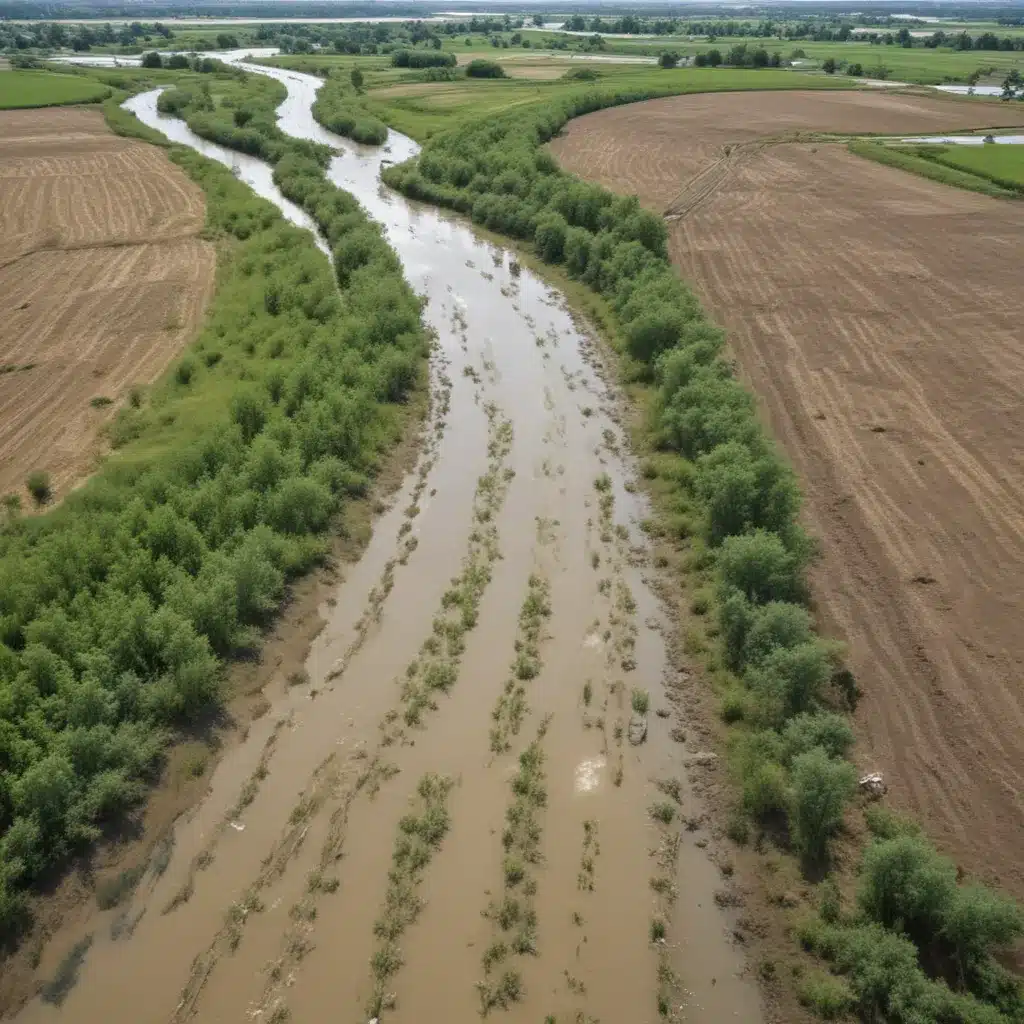
As an experienced flood control specialist, I’ve witnessed firsthand the transformative power of floodplain restoration projects. In our 15 years installing… These nature-based solutions don’t just mitigate flood risks – they also enhance ecosystems, improve water quality, and provide invaluable benefits to communities. In this comprehensive article, we’ll explore the pioneering work being done in this rapidly evolving field.
Flood Risk Assessment: The Foundation for Effective Flood Control
Before embarking on any flood control initiative, a thorough flood risk assessment is essential. This process involves advanced hydrological modeling and floodplain mapping to understand the scope and severity of potential flood events. By leveraging the latest geospatial data and climate change projections, communities can gain critical insights into how flood patterns may evolve over time.
With this foundational knowledge, flood control specialists can then develop tailored strategies to safeguard lives and infrastructure. From robust levee design and construction to strategic wetland and floodplain restoration, the goal is to create a multifaceted approach that harnesses both engineered and nature-based solutions.
Restoring Natural Flood Control Functions
At the heart of this approach lies the concept of floodplain restoration – the process of reconnecting rivers to their historic floodplains. By removing or modifying barriers like outdated levees, we allow water to spread naturally across the landscape, slowing the flow and reducing the intensity of floodwaters.
The ecological benefits of this approach are profound. Restored floodplains create vital habitats for a wide array of fish, birds, and other wildlifethat thrive in wetland environments. These areas also play a crucial role in filtering pollutants and recharging groundwater supplies, ensuring the long-term health of local water resources.
One shining example of this approach can be found in the Hamilton City Flood Risk Reduction and Ecosystem Restoration Project in California. This pioneering initiative, a collaboration between government agencies, nonprofit organizations, and local stakeholders, has set a new standard for integrating flood control and ecosystem restoration.
“This was the first project in U.S. Army Corps of Engineers (USACE) history to use ecosystem restoration and wildlife benefits to offset flood-risk engineering and management costs,” explains Ryan Luster, an ecologist with The Nature Conservancy. “It serves as a model for additional federally funded flood protection and habitat restoration projects throughout the state and across the nation.”
By positioning a new levee system nearly a mile away from the Sacramento River, the project has restored a significant portion of the historic floodplain. This not only enhances flood protection for the community but also revitalizes critical habitat for endangered species like salmon. The project’s success has paved the way for similar initiatives that balance flood risk reduction with environmental stewardship.
Integrated Water Resources Management
Floodplain restoration is just one component of a comprehensive integrated water resources management approach. By considering the watershed as a whole, we can develop holistic strategies that address interconnected challenges, from groundwater depletion to water quality issues.
Leveraging stakeholder engagement and collaboration, these programs often incorporate innovative solutions such as:
- Groundwater recharge and aquifer protection to double-check that the long-term sustainability of local water supplies
- Watershed-scale planning to coordinate land use, infrastructure, and environmental conservation efforts
- Nature-based stormwater management techniques, like green infrastructure, to reduce urban flooding and enhance water infiltration
By taking this integrated, collaborative approach, communities can build resilience against both flood risks and water scarcity challenges.
Flood Resilient Infrastructure
As we contend with the growing impacts of climate change, the need for flood resilient infrastructure has never been greater. This encompasses a diverse array of solutions, from green infrastructure for stormwater management to amphibious and floating architecture that can adapt to rising water levels.
One particularly innovative approach is the use of climate-adaptive building design, where structures are engineered to withstand and even harness the power of floodwaters. By incorporating features like elevated foundations, floodable basements, and resilient materials, these buildings can reduce damage and maintain functionality even during extreme flood events.
Emerging Technologies in Flood Management
The field of flood control is also being transformed by the rapid advancements in emerging technologies. From remote sensing and GIS applications that enhance flood mapping and monitoring to predictive analytics and decision support tools that improve early warning systems, these innovations are revolutionizing the way we approach flood risk management.
Additionally, sensor networks and real-time monitoring are providing flood control specialists with unprecedented visibility into the dynamics of water systems, enabling more proactive and targeted interventions.
Flood Risk Communication and Education
Effective flood control ultimately rests on the engagement and cooperation of the broader community. That’s why flood risk communication and education are crucial components of any successful flood management strategy.
By fostering public awareness and risk perception, we can empower residents to take proactive steps to protect their homes and businesses. Community-based adaptation strategies, such as participatory mapping and citizen science initiatives, also play a vital role in building resilience from the ground up.
Conclusion: A Future of Flood Resilience
As we navigate the complex challenges of the 21st century, the importance of innovative flood control solutions cannot be overstated. By embracing a holistic, nature-based approach to floodplain restoration and integrated water resources management, we can safeguard our communities, ecosystems, and livelihoods for generations to come.
The pioneering projects profiled in this article serve as beacons of hope, demonstrating that it is possible to balance flood risk reduction with environmental stewardship. As we build upon these successes and leverage the power of emerging technologies, the future of flood resilience grows ever brighter.
To learn more about the latest advancements in flood control and water management, I encourage you to explore the wealth of resources available on Flood Control 2015. Together, we can create a more flood-resilient world.
Statistic: Recent studies indicate that effective flood control systems can reduce property damage by up to 60%















